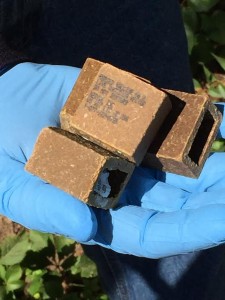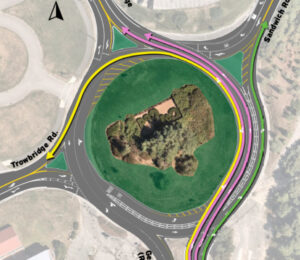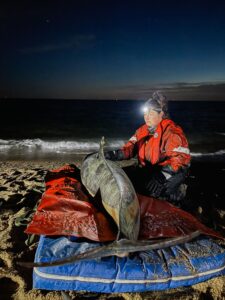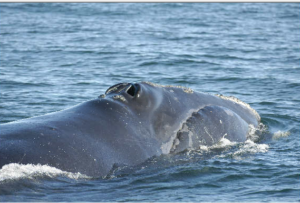
CCB MEDIA PHOTO
Raccoon rabies vaccination baits.
BARNSTABLE – Oral rabies vaccine baiting is underway on the Upper Cape and Mid Cape.
The US Department of Agriculture in collaboration with other agencies is continuing the Cape Cod Oral Rabies Vaccination Project.
Raccoon rabies was first reported in the state in 1992 but was not discovered on the Cape until 2004.
Officials started filling 319 bait stations in the Upper Cape and Mid Cape on Monday with a focus south of Route 151 and Route 28 from Woods Hole to the Bass River.
The coordinator of the Cape Cod Oral Rabies Vaccination Program Brian Bjorkland said the baiting locations have shifted.
“We haven’t had a detected raccoon rabies case Yarmouth east since prior to 2008 which is very encouraging,” Bjorkland said. “We are shifting our resources out of a majority of Dennis, Harwich and Brewster and using those resources in parts of Falmouth and Bourne that haven’t been baited since 2004 when rabies was first detected on Cape Cod.”
Bjorkland said the bait stations are used in more populated regions.
“In areas where the human occupancy is rather high we use the bait stations so dogs and people are less likely to come across the baits and the raccoons can really hone in on those spots and get vaccinated,” he said.
Bjorkland says the ultimate goal is to get raccoon rabies off the Cape.
“With this baiting we will be back right up to the canal for the first time since 2004,” he said.
A small section of Sandwich had been baited the last couple of years along the canal but this time all of Falmouth, Bourne and Sandwich will be baited.
In addition to the rabies bait distribution, enhanced surveillance is also conducted, according to Bjorkland.
“We test every rabies vector that we can get our hands on whether it’s a roadkill, or a sick acting animal or an animal that is deceased in someone’s backyard,” he said. “That way we are sure that we are not missing out on rabies cases that would only be detected by sending samples to the state labs that are only involved with pet or human exposure cases.”
They are also testing live animals in the areas where the baiting has occurred.
“We also live trap animals where we have been doing the baiting to assess the serology rate,” Bjorkland said. “Basically, the number of animals and the percentage of the population that were successfully vaccinated by the baiting program and we are seeing very high numbers in the bait zone which is also very exciting.”
Anyone who finds a bait intact should place it in a brushy areas where people or pets are not likely to find it.
Chewed baits should be handled with gloves or a paper towel and disposed of in the trash.
By BRIAN MERCHANT, CapeCod.com Reporter
























Speak Your Mind